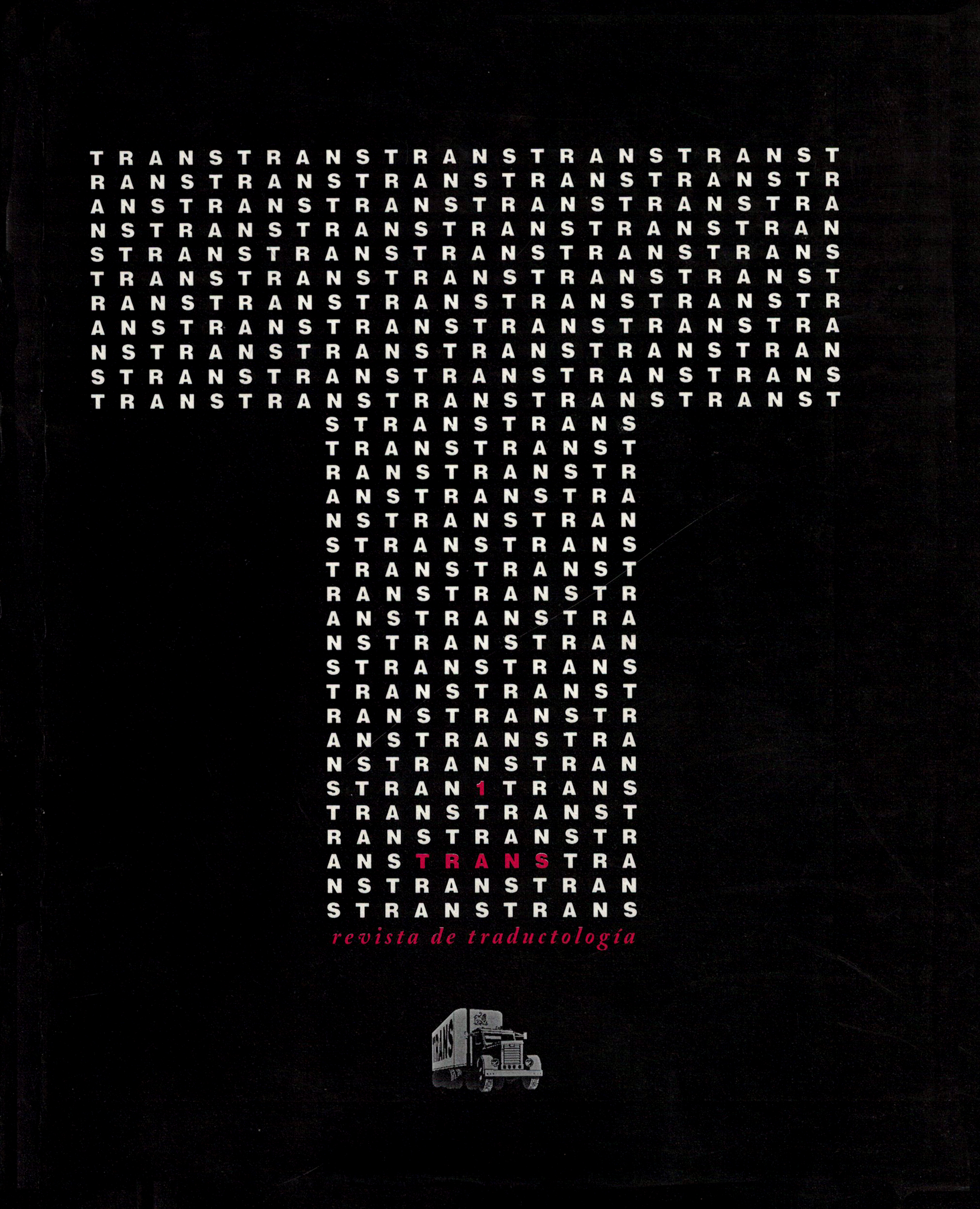Consideraciones sobre el desarrollo de un sistema experto para la traducción automatizada
DOI:
https://doi.org/10.24310/TRANS.1996.v0i1.2017Abstract
Los primeros intentos en la traducción automática constituyeron uno de los fracasos más espectaculares de la inteligencia artificial pero en la actualidad se están aplicando nuevos enfoques y técnicas a este problema, lo cual permite vislumbrar la aparición de sistemas competentes dentro de algún tiempo.
Los fracasos habidos hasta ahora se deben fundamentalmente a que se construyeron sistemas basándose en la teoría del lenguaje de Chomsky, la cual se queda solamente con la estructura de la frase considerando que a una estructura profunda (un sentido, una idea) le corresponde una estructura superficial (una frase). Esto no tiene en cuenta, por tanto, los distintos sentidos que puede tener la frase según el contexto, situación, entonación, creencias, saber compartido, etc. Como no se tiene en cuenta los distintos sentidos y significados que una frase o, más correctamente, un texto puede tener en el otro idioma. De esta forma los sistemas construidos sólo sirven para traducir frases unívocas.
Lo que se pretende en este estudio es indicar cómo s podrían incorporar algunas de estas nuevas variables a un sistema experto para conseguir una mayor aproximación al problema de la traducción automática.
Downloads
Metrics
Publication Facts
Reviewer profiles N/A
Author statements
Indexed in
-
—
- Academic society
- N/A
- Publisher
- Universidad de Málaga
Downloads
Published
How to Cite
Issue
Section
License
All contents published in TRANS. Revista de Traductología are protected under the Creative Commons Attribution-NonCommercial-ShareAlike 4.0 International (CC BY-NC-SA 4.0) license. All about this license is available in the following link: <http://creativecommons.org/licenses/by-nc-sa/4.0>
Users can copy, use, redistribute, share and exhibit publicly as long as:
- The original source and authorship of the material are cited (Journal, Publisher and URL of the work).
- It is not used for comercial purposes.
- The existence of the license and its especifications are mentioned.
- ShareAlike — If you remix, transform, or build upon the material, you must distribute your contributions under the same license as the original.
There are two sets of authors’ rights: moral and property rights. Moral rights are perpetual prerogatives, unrenounceable, not-transferable, unalienable, imprescriptible and inembargable. According to authors’ rights legislation, TRANS. Revista de Traductología recognizes and respects authors moral rights, as well as the ownership of property rights, which will be transferred to University of Malaga in open access.
The property rights are referred to the benefits that are gained by the use or the dissemination of works. TRANS. Revista de Traductología is published in an open access form and it is exclusively licenced by any means for doing or authorising distribution, dissemination, reproduction, , adaptation, translation or arrangement of works.
Authors are responsable for obtaining the necessary permission to use copyrighted images.













21.png)
